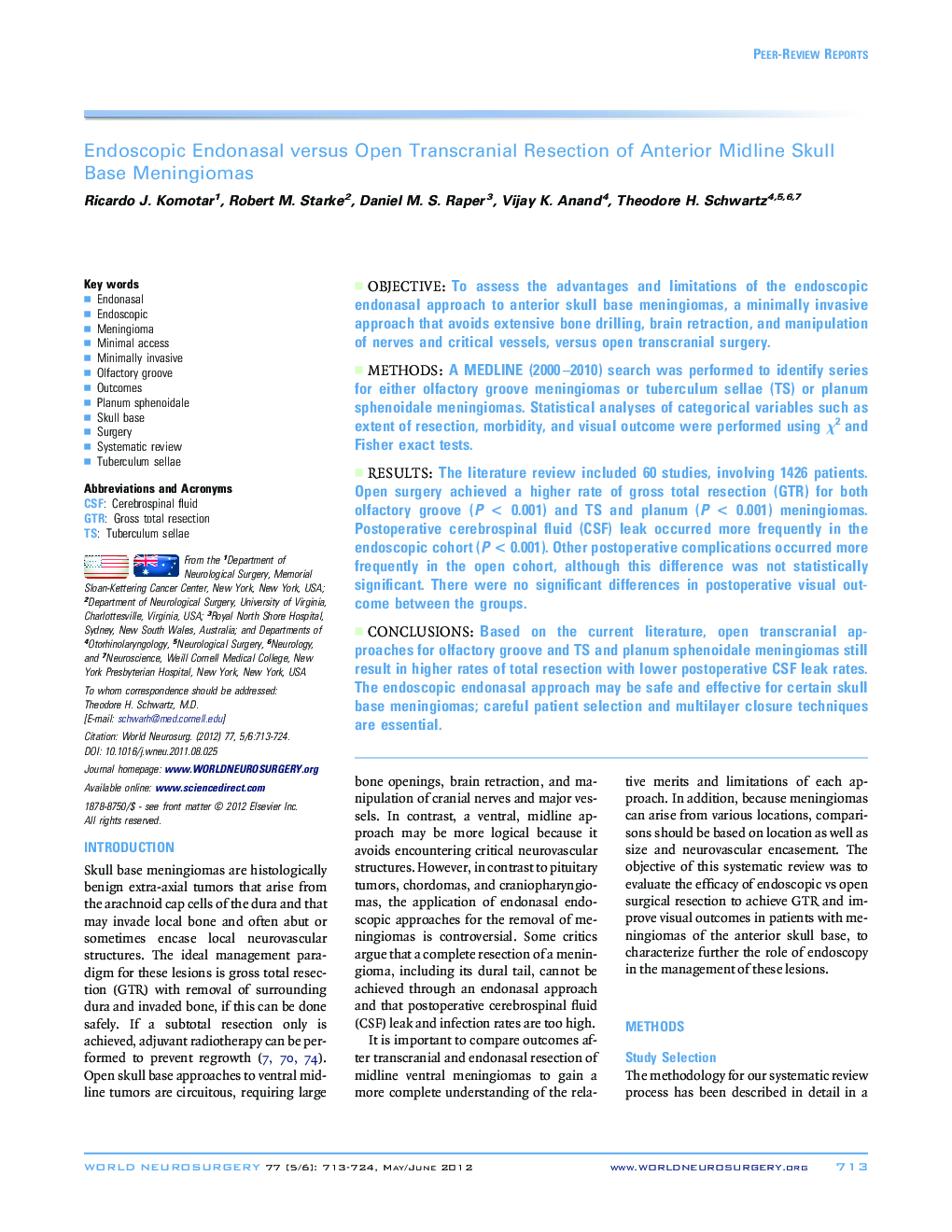| Article ID | Journal | Published Year | Pages | File Type |
|---|---|---|---|---|
| 3097073 | World Neurosurgery | 2012 | 12 Pages |
ObjectiveTo assess the advantages and limitations of the endoscopic endonasal approach to anterior skull base meningiomas, a minimally invasive approach that avoids extensive bone drilling, brain retraction, and manipulation of nerves and critical vessels, versus open transcranial surgery.MethodsA MEDLINE (2000–2010) search was performed to identify series for either olfactory groove meningiomas or tuberculum sellae (TS) or planum sphenoidale meningiomas. Statistical analyses of categorical variables such as extent of resection, morbidity, and visual outcome were performed using χ2 and Fisher exact tests.ResultsThe literature review included 60 studies, involving 1426 patients. Open surgery achieved a higher rate of gross total resection (GTR) for both olfactory groove (P < 0.001) and TS and planum (P < 0.001) meningiomas. Postoperative cerebrospinal fluid (CSF) leak occurred more frequently in the endoscopic cohort (P < 0.001). Other postoperative complications occurred more frequently in the open cohort, although this difference was not statistically significant. There were no significant differences in postoperative visual outcome between the groups.ConclusionsBased on the current literature, open transcranial approaches for olfactory groove and TS and planum sphenoidale meningiomas still result in higher rates of total resection with lower postoperative CSF leak rates. The endoscopic endonasal approach may be safe and effective for certain skull base meningiomas; careful patient selection and multilayer closure techniques are essential.
